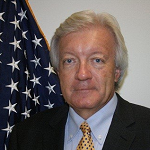Who hasn’t experienced boring training, especially annual mandatory training? You can almost see participants’ eyes glaze over.
There’s a solution — one that can transform training from a snooze-fest into a meaningful learning experience. Experiential education involves learners in ways that are effective, long-lasting and interesting. It has a rich history and great promise for corporate training. The activities encourage participants to put down their electronic devices and fully engage. They also reinforce the basic principles of learning: reinforcement, behavior modeling, feedback and learning transfer. Despite a hiatus from mainstream corporate training, experiential education has fresh relevance with today’s learners.
What Is Experiential Education?
Experiential education is more relevant than ever in corporate training programs. It significantly enhances learning and retention by engaging learners in direct experience, reflection, analysis and experimentation. It also empowers participants to take charge of their own development. While it’s not a new approach, experiential education has been outside of mainstream corporate training long enough that it is a sufficiently novel experience to capture participants’ attention, enthusiasm and imagination and to trigger deep learning.
The key elements of experiential education include action, reflection and transfer. The action makes all the difference. It involves the whole person and engages him or her through thoughts, feelings and physical activity. No one can resist experiential education; it works on everyone, from millennial new hires to senior Baby Boomer leaders and everyone in between.
The best experiential education presents physical and mental challenges or obstacles that require participants to work together to successfully overcome. These challenges are often a combination of real, imaginary and created, but the common thread is that the group (or team) succeeds or fails as one. Individual achievements aren’t enough.
A Natural Teacher
Experience is a natural teacher; it helps us from birth but is somehow neglected as a corporate training tool. Perhaps it’s because the phrase itself conjures visions of expensive hardware (ropes courses) or complicated software (learning management systems). But those tools aren’t necessary. Learning can occur anywhere there is an opportunity to reflect and think. Without reflection, without thinking, without effective facilitation, without connecting the metaphorical dots, the activity is just that: an activity, which may be fun but is useless for learning.
Participating in a bucket brigade, a trust fall or any of a host of other activities that are a staple of experiential education is fun. But the facilitator makes the learning occur (or not). An effective facilitator is a learning catalyst, and just like the catalyst in a chemical reaction, the facilitator accelerates learners’ reactions and encourages the formation of something new. The open-ended questions of a gifted facilitator transform participants from students into teachers of themselves and others. And self-taught knowledge is much more memorable than instructor-led learning.
All experiences are personal and unique to the individual, which is part of the beauty of the group activities included in experiential education. Despite learners’ own knowledge, training, experience and disposition — all of which play a significant role in how they experience the event — they must communicate, interact with, cooperate with, and hear and share the perspectives of others. They may (and often do) choose to pay attention to something that others do not, and everyone will learn and grow from these different perspectives (whether they want to or not).
Challenging Learners
We grow and change when we are challenged, and nothing challenges like experiential education. It holds great potential for growing leaders and improving employees’ soft skills and ability to interact with peers, managers and customers. Participants consistently report that retrospective learning happens as a result of experiential education. In the shower the next morning, in the car the next week or at work the next month, they look back on an activity and remember what happened, reflect more closely and learn in even greater depth.
Every organization is seeking better employees and leaders, and the corporate training industry is constantly looking for the next magic bullet. They don’t have to. So much of the pioneering organizational development work that was done in the 1970s has been forgotten, but it is relevant to today’s training issues. Experiential education has a place in every corporate training program — especially if it’s seeking to help leaders grow and improve.










